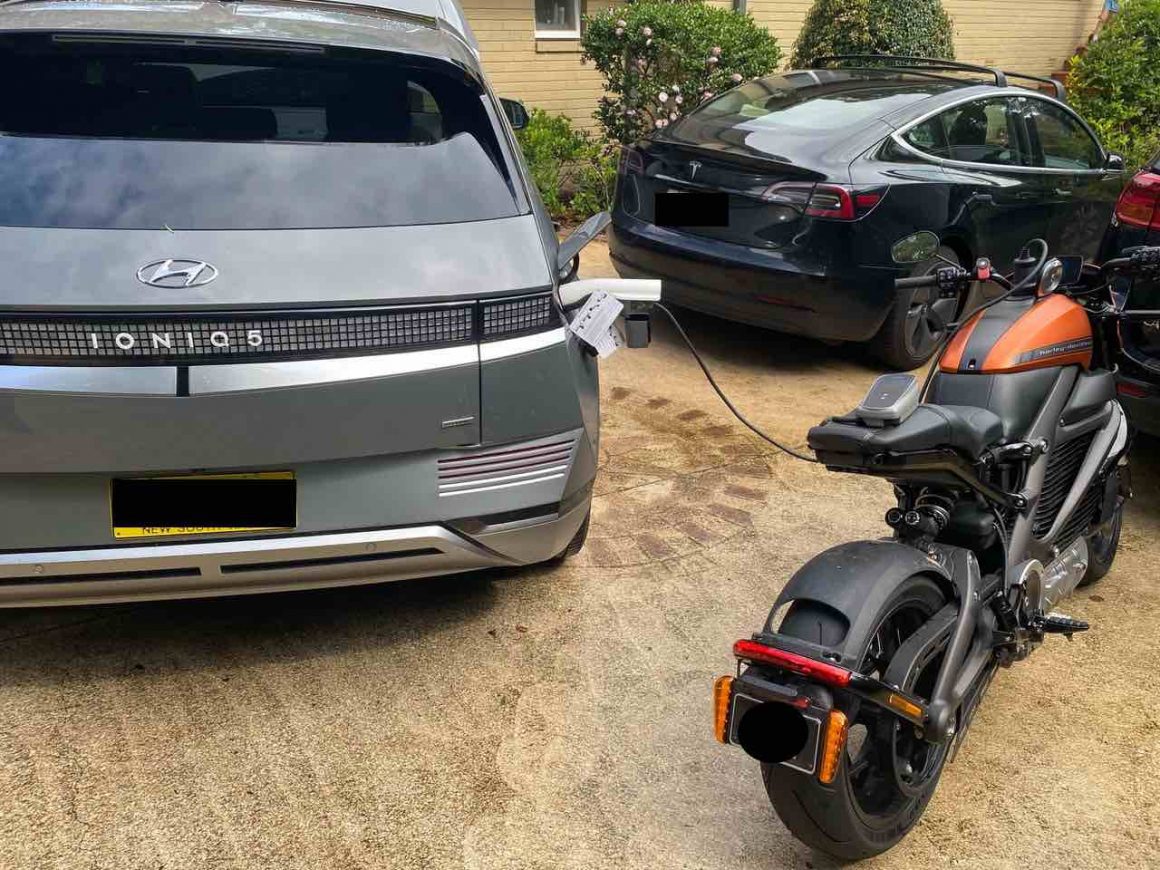Beauty, as they say, is in the eye of the beholder, and that includes the shape, coloour, design and lines of a car, and electric vehicles are no exception.
This is not a scientific conclusion, but my experience – from having driven nearly every EV available to customers in Australia – is that the Hyundai Ioniq 5 electric SUV is the most admired, looked at, and commented EV since I first put a surf-board on the roof-racks of my Tesla Model 3 in late 2019.
Twice now I have taken an Ioniq 5 for week-long test drives, and no other EV that I have driven in the last two years has elicited more admiration, inquiries, comments and second glances as the Ioniq 5.
“Snazzy car,” said one admirer as she walked past the car charging outside a cafe in Collector. “How do you find it,” asked another, who turned out to be a Hyundai dealer. “We really want one of those,” said another at the same destination, who apologized for the fact that he is still driving a fossil fuel car.

Wanting and getting are different matters. The Ioniq 5 – voted by many different awards around the world as the “car of the year” – is hard to get in Australia. For one, it’s too pricey for most – and getting one in the limited online releases is a bit like trying to buy a Rolling Stones ticket. They sell out in minutes.
There’s a few good reasons for this enthusiasm.
For a start, like the Model 3, it looks different. In an age where every car maker is focused on making cars that look like any other, Tesla and Hyundai have gone out of their to make something that looks different.
It is helped that – unlike many EVs – this is not a conversion or adaptation of an existing petrol or diesel car. The Ioniq 5 is built on a new electric platform that it shares with the equally impressive sister car, the Kia EV6.
This platform, as it does for other models, allows the car maker to seize on the benefits of the electric vehicle. Tuck the smaller electric motor away, push the wheels to the front and out wide, create oodles space on the interior, get the batteries in the right place for optimum weight and handling, offer a “frunk” ( trunk in the front), and go wild on the design.
With the Ioniq 5, Hyundai borrowed some lines from a 1970s model called the Pony. It seems a lot of people, including me, like it, particularly the front end.
Its size – officially a compact SUV – is deceptive, and the response from observers is that it either bigger or smaller than they expected, but they are wowed by the acres of space inside, the clean dashboard layout, and the moveable centre console.
There’s another thing to: The vehicle to load facility which seems top of mind to people worried about electricity prices, and energy resilience.
It’s kind of a half-way house to full vehicle to grid capabiliies, where the car will exchange power and services with the grid in a future dominated by renewables.

But vehicle to load (V2L) offers cool options such as powering any appliance you can bring along, your tools, another EV (see above) and, if you really need to, run an extension cord from the house to keep the fridge and other things going if the lights go out.
Not that the Ioniq 5 is perfect. It’s handling is good, but not as good as the Kia EV6 stablemate. It has vehicle to load, but for some reason the Australian offering doesn’t include the standard plug under the back seat, as the EV6 does.
I don’t think the navigation is anything close to the Tesla – it kept on telling me about roundabouts that must have been removed years ago. “Do a U-turn,” it exclaimed. “No, I won’t,” I said. I should stop talking to car computers.
And travelers have to rely on a fast-charging network that is struggling to cope with the increased number of EVs on the road, but that’s probably not the Ioniq 5’s fault, but something for customers to consider.

Giles Parkinson is founder and editor of The Driven, and also edits and founded the Renew Economy and One Step Off The Grid web sites. He has been a journalist for nearly 40 years, is a former business and deputy editor of the Australian Financial Review, and owns a Tesla Model 3.

